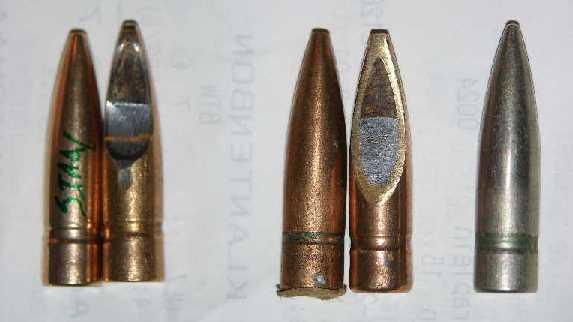I think you will find that the side of the envelope that appears thickest is the side that you started cutting and the hacksaw blade has dragged some of the softer copper envelope into the lead. If you polished the cut I think you would find the variance in envelope thickness would disappear. I have sectioned many .303 bullets of all types and even wartime production is not that bad.
The Mark VII bulets with the "cotton" material in the tip is a wartime economy that used compressed wood fibre to save aluminium. Other materials that have been used as a tip filler over the years are ceramic, compressed paper and plastic. U.S. contract production of .303 ball ammunition for
Britain
did not have the lighter tip filler and so the bullets are slightly shorter than the regular Mark VII.
Your other point is about WW2 hollow point bullets. There were none in WW2. Are you thinking of the Mark IV and V round nosed hollow point bullets which date from the late 1890s? These were banned by the St.Peterberg Convention and were relegated to training after 1899, although some were issued in 1905 for an expedition to Somaliland. There is no aluminium tip in those and the hole is punched into the bullet about .3 inches deep, the piece of envelope cut out being carried to the base of the hole.
The WW2 early production .303 Incendiary B Mark VIz bullet had a very small hole (less than 1mm) in the nose that was filled with solder, but it is virtually invisible unless one is looking for it, so I doubt if you mean that.
Regards
TonyE















 Register To Reply
Register To Reply






